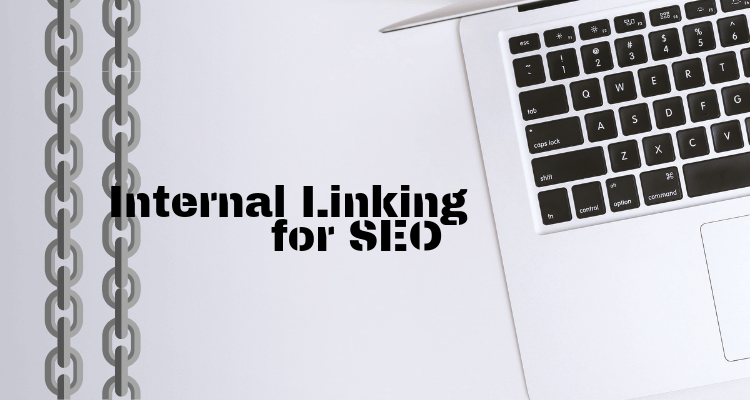Introduction
Internal linking must be utilized to create a solid website structure for search engine optimization to enhance website crawl ability, navigation, and link authority by interlinking relevant pages effectively. Use descriptive anchor text for internal links to help search engines grasp the content hierarchy and subject linkages within your website. This will give the engine context and relevance. Important pages are guaranteed to gain more link juice from well-organized internal link-building structures, increasing their ranking potential and making it easier for users to find and explore relevant information. Consequently, there’s a greater chance that search engines will index and rank your website higher, enhancing organic traffic and overall SEO performance.
What is internal linking?

– Interlinking connects pages or content within the same website using hyperlinks.
– It facilitates easy page navigation, allowing users to find relevant content without returning to the homepage or conducting new searches.
– Interlinking encourages user engagement and longer website exploration, reducing bounce rates.
– For SEO, internal linking aids in the efficient discovery and indexing of content by search engine crawlers.
– It helps search engines understand the hierarchy and structure of websites.
– Interlinking can transfer link authority, improving the visibility and ranking of linked pages in search engine results.
– Material organization is enhanced through logical connections between relevant content.
– Interlinking is a valuable SEO and user experience tactic that improves navigation, engagement, and search engine exposure.
How Important is building of Internal linking?
– Interlinking improve crawl ability and indexation, allowing search engine crawlers to find and access all pages on your website.
– “Link juice” transfer through internal links boosts the authority of linked pages, potentially improving their ranking in search results.
– Enhanced user experience and engagement are achieved as internal links guide users to relevant content, reducing bounce rates and increasing their time on your site.
– Organizing content with Interlinking establishes a clear hierarchy, making it easier for search engines to understand connections between pages.
– Descriptive anchor text in internal links provides context to users and search engines, increasing the likelihood of ranking for relevant keywords.
– Overall, Interlinking is a powerful SEO strategy that enhances user experience, engagement, and search engine crawling, leading to improved rankings and authority.
How you should do internal linking
Points for efficient Interlinking
1. Material Relevance and Context: Ensure internal links are highly relevant to the content they appear in, providing context and insightful information to users.
2. Use Descriptive Anchor Text: Avoid generic phrases like “click here” and use descriptive anchor text with relevant keywords to aid search engines in understanding the linked page’s topic.
3. Maintain a Balanced Number of Links: Avoid overwhelming users with too many links. Focus on providing sufficient internal links that enhance content and facilitate easy navigation.
4. Utilize Site Hierarchy and Structure: Organize content logically, linking subpages to parent or relevant category pages, and linking higher-level pages to significant subpages. This establishes a clear hierarchy for search engines and users.
5. Avoid Broken Links: Regularly audit internal links to ensure they function properly, avoiding broken or dead-end pages that can negatively impact SEO and user experience.
Conclusion
Internal linking is a crucial SEO strategy that improves user experience, engagement, and search engine rankings. By interlinking relevant pages and content, websites can increase crawl ability, user navigation, and link authority distribution. Descriptive anchor text provides context and relevance to content, helping search engines understand the content hierarchy and subject linkages.
This improves material organization, the logical flow of information, and the user experience.For efficient internal linking: relevant context, balanced links, site hierarchy, and regular audits to avoid broken links. By implementing these strategies, websites can significantly improve their search engine rankings, exposure, and authority.
FAQS
Internal linking is the practice of connecting one page on a website to another page on the same site through hyperlinks. It is crucial for SEO as it improves crawlability, user experience, and search engine rankings.
Internal links make it easier for users to navigate through your website and discover related content. They encourage users to explore more material, reducing bounce rates and increasing overall user engagement.
Yes, internal linking influences search engine rankings. It helps search engine crawlers understand the hierarchy and structure of your website, leading to better indexing and ranking of your pages.
Descriptive anchor text provides context and relevance to the linked page, helping both users and search engines understand the content of the destination page. It increases the likelihood of ranking for relevant keywords.
It's essential to maintain a balance in the number of internal links. Include enough links to enhance content and facilitate navigation, but avoid overwhelming users with excessive links.
To optimize internal linking, focus on material relevance, maintain a logical site hierarchy, avoid broken links through regular audits, and use descriptive anchor text.
Implement strategic internal linking to enhance crawl ability, navigation, and search engine rankings.